Every morning, rain or shine, we get our bug gear and rain boots on and hit the trails back in the woods on the property. We also bring our coffee with us and I have my camera, of course. Even though we walk the same trails on a daily basis, we have been experiencing a few unexpected sightings, here and there. Even though I hear them and I don’t always get the chance to see them, there have been several new species of birds taking up residence back in the woods. One of our favorite experiences thus far has been our ruffed grouse sightings. We have seen at least three females and have had several encounters with them so far. During the late winter into the early spring, while my partner was clearing the trails and cutting down trees for firewood, he would see one of these birds quite frequently. Later in the spring, after more of the vegetation returned, we have had a few more up close and personal encounters with these birds. We have seen two gravid females that come out from under the ferns into the trails. These ladies make sure to remind us that we are just visitors in the woods and we should just keep moving along. True to their nicknames, “thunder chickens,” they loudly burst out from the underbrush and attempt to make themselves appear larger than they really are. It is as though they are performing a dance along the ground. They will fluff up their feathers and let us know they mean business. We feel terrible because they also make such a pathetic sound that reminds me of a vulnerable dog that is frightened and in pain. We remain calm and then move on slowly, this allows us to leave the area and respect their space. This seemed to be the end of these encounters until our discovery of the arrival of their chicks. Now there is something you don’t see very often! From a respectable distance, it is going to be something to see these chicks develop into adults. I hope they stick around, especially for winter. They scurry into the underbrush pretty quickly, but I hope to get at least get one photograph of these fascinating birds. By now, we all have a pretty comfortable routine and we are pretty good about respecting each other’s space.
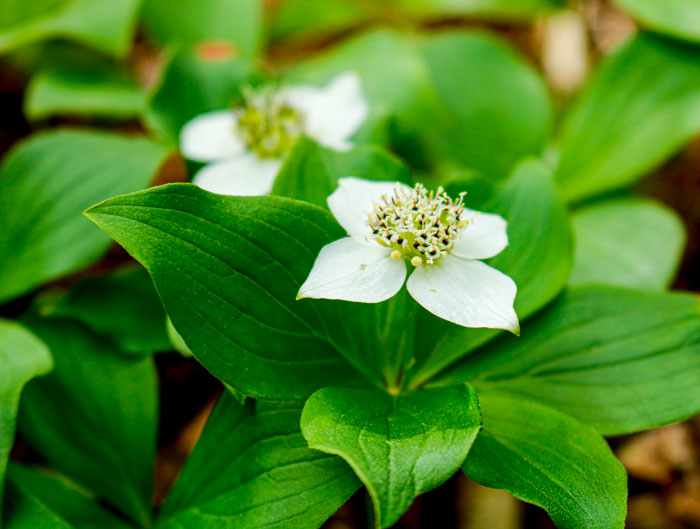
I had another interesting experience a few weeks back in the woods when I discovered a bed of beautiful white flowers growing on one side of one of the trails. This trail is also lined with white pines Pinus strobus and has the most wonderful pine fragrance. The trail is covered with fallen pine needles and with every step, it reminds me of walking on a very soft carpet. As far as the flowers go, I made a mental note of the number of petals and leaves of these newly discovered plants. I then set off to see if I could identify these mysterious floral gems in one of my guidebooks. When necessary, I often consult my Newcomb’s Wildflower Guide. I have had this book since I had taken a college botany course and I have come to rely on it extensively.
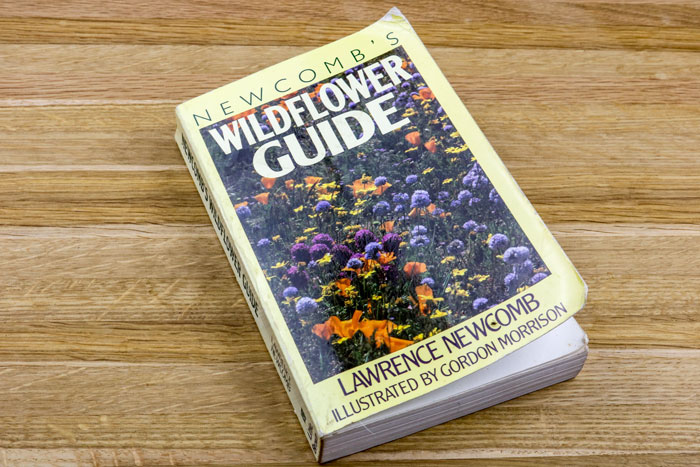
I soon found out that these flowers are called bunchberry. Since my discovery, I have gone back into the woods a few times to photograph these flowering plants. This has not been an easy feat, I have had quite a time between the bird-sized mosquitoes back there fighting for my blood and my trying to see what I was focusing on through a bug net. I think my mission was accomplished and I did some more research on these species of flowering plants that I would like to share with you.
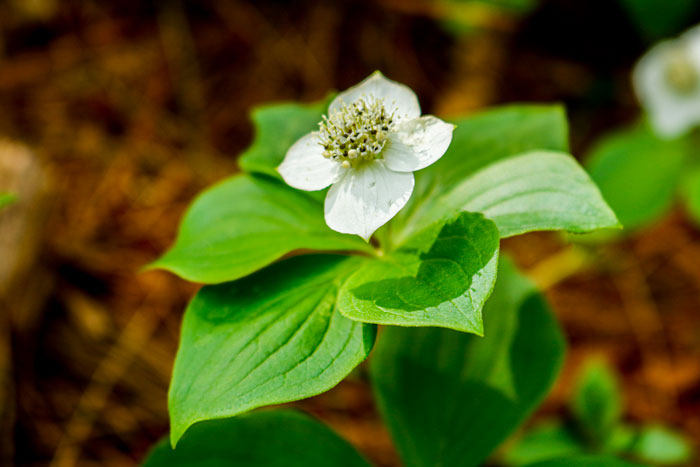
What is Bunchberry?
Bunchberry Cornus canadensis are low-lying erect perennial plants that can be found growing on forest floors and change with the seasons. They can be found growing individually, but are more typically found in colonies that generally form a carpet-like mat. This plant is also known as dwarf dogwood, bunchberry dogwood, creeping dogwood, ground dogwood, Canadian dwarf cornel, Canadian bunchberry, quatre-temps, and crackerberry. They are native to eastern Asia, the northern United States, New Mexico, Canada, and Greenland.
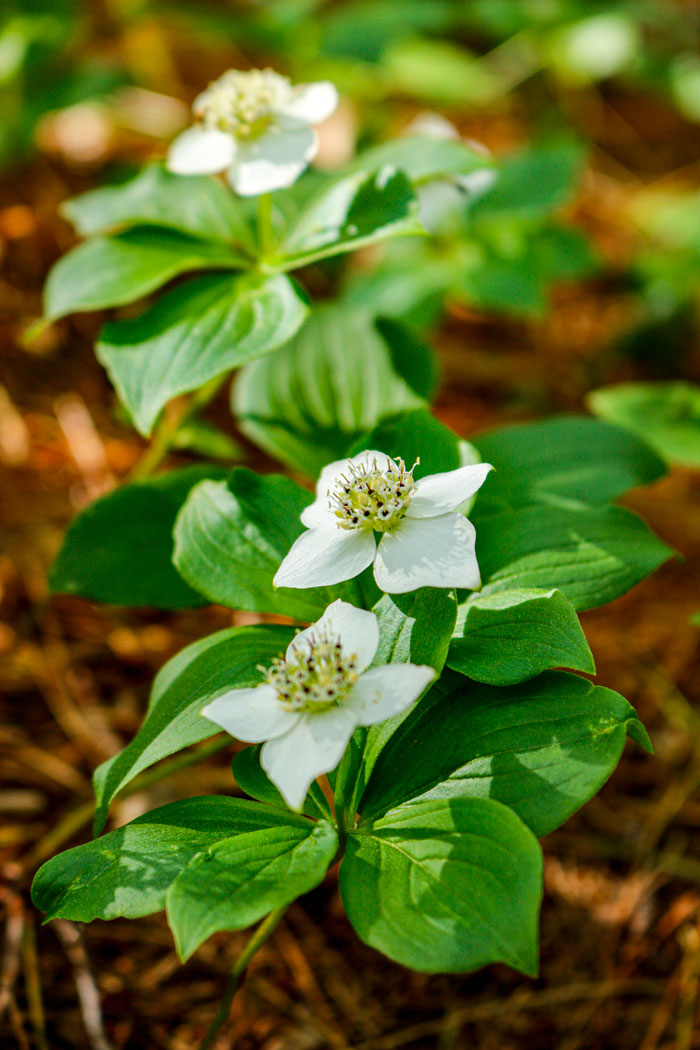
What Does Bunchberry Look Like?
Bunchberry has a single whorl of six egg-shaped and pointed leaves that can be found toward the top of their stems. Positioned just above the leaves, there is a cluster of tiny greenish or yellowish flowers that are surrounded by four ovate white or pinkish-colored petal-like bracts. This cluster of flowers resembles a single, one-inch solitary flower. During the mid to late summer, this cluster of flowers will become bright-red berries. The leaves will become wine-red in color during the fall. It spreads by underground stems.
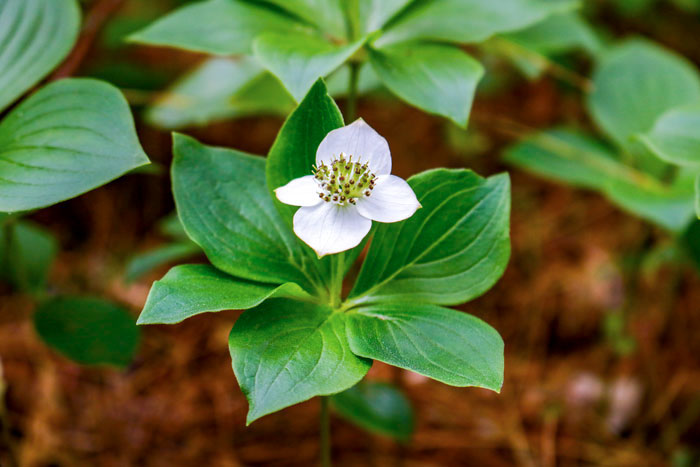
Where does Bunchberry Grow?
These plants thrive where it is cold, even bitterly cold, and generally do not perform well where summers are very hot. Bunchberry is a mesophytic species that flourish in cool, moist soils. It inhabits mountainous and boreal coniferous forests, where it can be found growing along the edges of moist woods, on old tree stumps, in mossy areas, and among other open and moist habitats. It is cold hardy, growing all the way up to planting zone two. It is listed for zones two through seven.

Check out the USDA plant hardiness zone map, to see if you can find bunchberry naturally growing in your area or if it is suitable for planting it in your growing zone. You can search by your state or zip code.
Are Bunchberries Edible?
Yes, pollinated bunchberry will produce edible red berries that are tasty and enjoyable for bears Ursidae, hares Lepus, and even humans. For we humans, mature fruit and seeds can be consumed raw or cooked. Although some individuals may not find the raw seeds desirable as the large seeds contained inside can be found to be hard and crunchy. The berries are also mealy with a mild flavor. They do have nutritional benefits though, as they are high in concentrations of flavonoids and vitamin C. On the plus side, as far as edible benefits go, the berries preserve well and can be added to jams, puddings, as well as other baked goods and teas. They contain high levels of pectin and this makes them a great addition to low-containing pectin fruits when making jams.
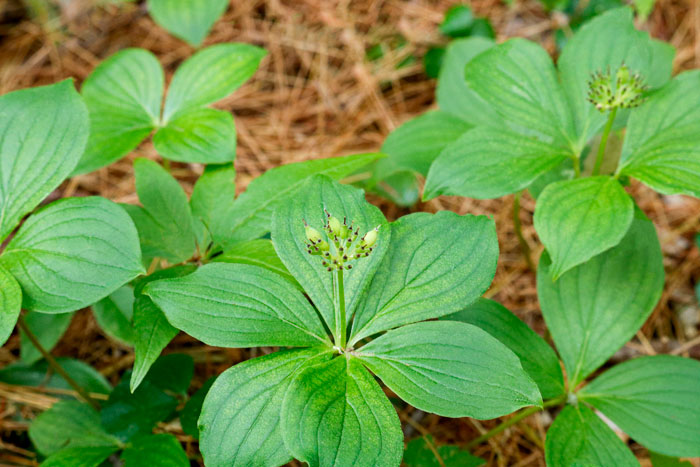
The berries will be green or yellow until they ripen into edible and red berries.
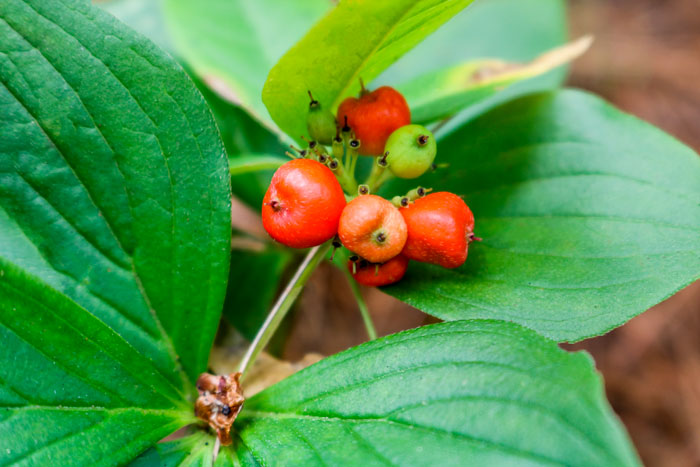
Growing & Caring for Bunchberry
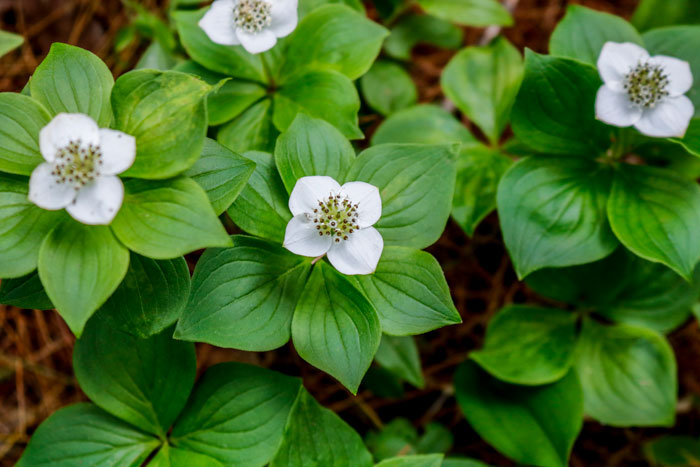
As a shade-loving and herbaceous perennial, bunchberry makes a wonderful choice as a ground cover for edging shaded pathways and naturally shaded areas of your property. This woodland wildflower does well in moist, acidic, well-drained soil that is rich in organic soil. It is best to avoid the afternoon sun because it dries the plants out and causes the foliage to dry prematurely. They also benefit from compost and peat moss. You can keep your plants moist by adding a light layer of mulch with materials such as pine needles. Bunchberry is relatively easy to care for and requires no pruning. Once planted, all you need to do is keep your plants watered and enjoy their beautiful and changing appearance from spring into fall.
Companian Plants for Your Bunchberry
You can grow bunchberry with similar shade-tolerant plants such as hosta Asparagaceae, twinflower Linnaea borealis, foamflower Tiarella, hydrangeas Cornales.
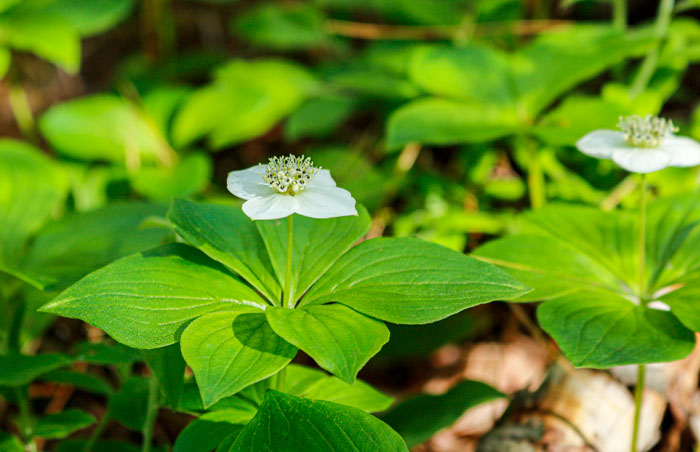
Bunchberry is beneficial choice of plant because it is both deer Cervidae and rabbit Chordata resistant. Your bunchberry will make a great addition to your yard as it will attract beautiful butterflies Rhopalocera and a variety of birds Aves.
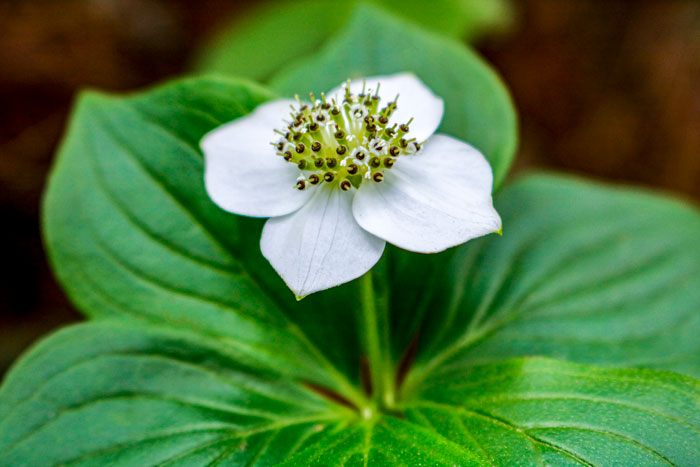
Leave a Reply